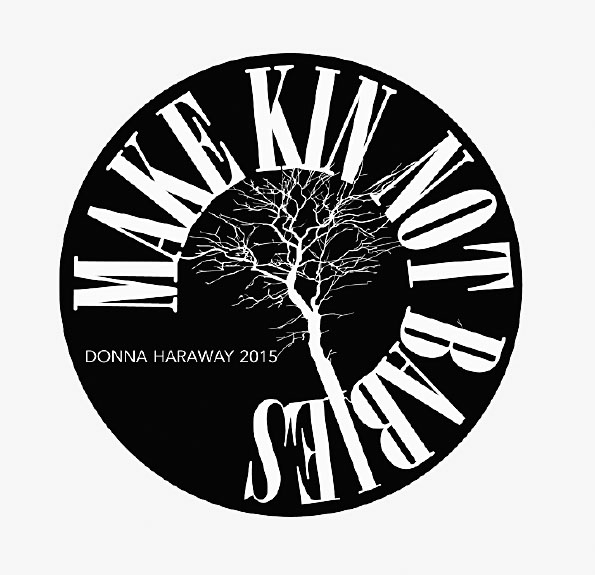Language, says Donna Haraway, can provide a route away from environmental catastrophe. That might sound implausible, but for this philosopher, ‘It matters what ideas we use to think other ideas.’ And language is the way we express these ideas and flow them into public consciousness. One key linguistic expression she thinks we should reconsider, Haraway explains in this book (which knits together various recent essays), is the increasingly popular terming of our current geological epoch: the ‘Anthropocene’.
Echoing her much-cited 1985 ‘Cyborg Manifesto’, Harraway calls for the flattening of any supposed interspecies hierarchy
It’s not that she denies the basic tenets of the Anthropocene (that humankind has become the biggest influence on earth’s environment); rather, it’s that she believes the term imbues consideration of climate change and earth’s many other environmental problems with an unhelpful and unproductive degree of inevitability, not least because it places humankind at the centre of everything. It is this affirmation of an anthropocentric perspective that Haraway argues is responsible for our problematic relationship with the natural world. Instead, echoing her much-cited 1985 ‘Cyborg Manifesto’, she calls for the flattening of any supposed interspecies hierarchy (an idea that has had much currency in the recent work of artists such as Phillipe Parreno, Pierre Huyghe and Joan Jonas). Instead she offers the ‘Chthulucene’, a complex, productive call-to-action against the Anthropocene.
The etymology of her term stems from the Pimoa cthulhu, a species of spider (common to the stumps of redwoods in the writer’s native California and typical of the personal references that populate Haraway’s arguments); she uses the spider’s web as a metaphor for a vision of the world in which there is no hierarchy between humans and nonhuman animals, where instead all lives are interwoven. ‘Weaving… performs and manifests the meaningful lived connection for sustaining kinship, behavior, relational action – for hózhó – for human and nonhumans’ (hózhó being a word from the Navajo language variously translated as peace, balance or harmony; again a defining aspect of Haraway’s writing is its mixing of terms from a variety of cultures and mythologies). Hammering home the point, Haraway compares the symbiotic relations between nonhuman animals with the way humans have organised themselves in the industrial, urban and agricultural systems built under capitalism. ‘Critters interpenetrate one another, loop around and through one another, eat each another [sic], get indigestion, and partially digest and partially assimilate one another.’ What humans have built, however, is a political and economic structure that is ‘ecosystem-destroying, human and animal labor-transforming, multispecies soul-mutilating, epidemic-friendly, corn-monocrop-promoting, cross-species heartbreaking’.
All of this, of course, would come across as passive handwringing if Haraway’s burlesque of language failed to lead anywhere. How do we turn the idea of the Chthulucene – this interwoven, nonhierarchical, symbiotic mode of living across species – into a reality, something we ‘live and die with, not just think and write with’, as she puts it? Haraway provides a few examples of small-scale art-activist-environmentalist projects (for example, an illustrator and an animal behaviourist collaborating on a Malagasy-language children’s book in which a lemur appears as the hero – encouraging a new generation of Madagascan children to look after the primate’s habitat), but none of these are convincing as real solutions to such great problems. This is easily where the book is at its weakest. Where Haraway is far more radical – and offers a convincing strategy for harmonising human and nonhuman animal relationships, utilising her newly established vocabulary – is in her call for concerted efforts to reduce the world’s human population.
Attacking ‘bounded individualism’, but acknowledging that population control has historically been led with ‘the interests of biopolitical states more in view than the well-being of women and their people’, her argument is brave and persuasive: we can be as ‘green’ as we like, but with the current estimate of a world human population of 11 billion by the end of the twenty-first century, it’s not going to make much difference. Instead – and given Haraway’s interest in language, it perhaps comes as no surprise that she encapsulates her solution in an elegant catchphrase – she pleads: ‘Make kin, not babies!’
This article was first published in the January & February issue of ArtReview
